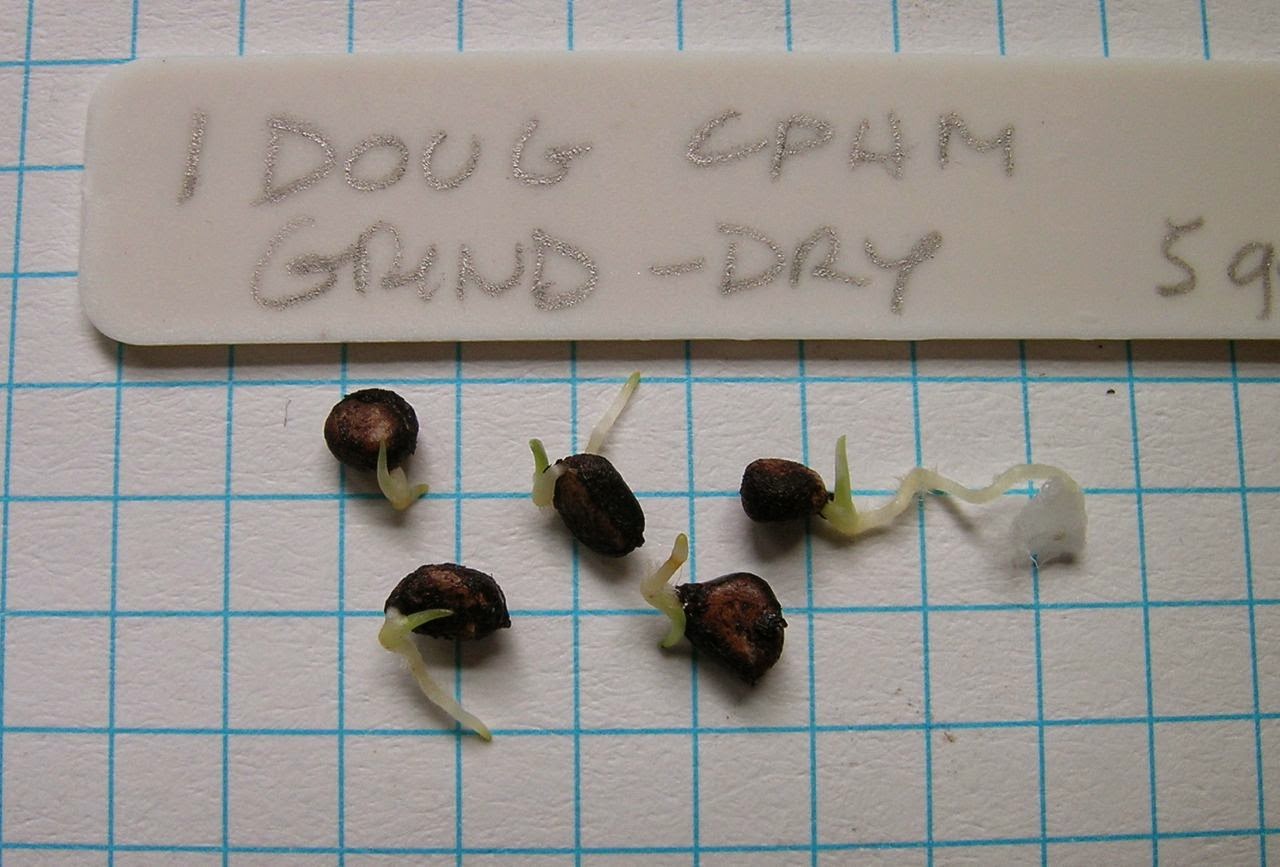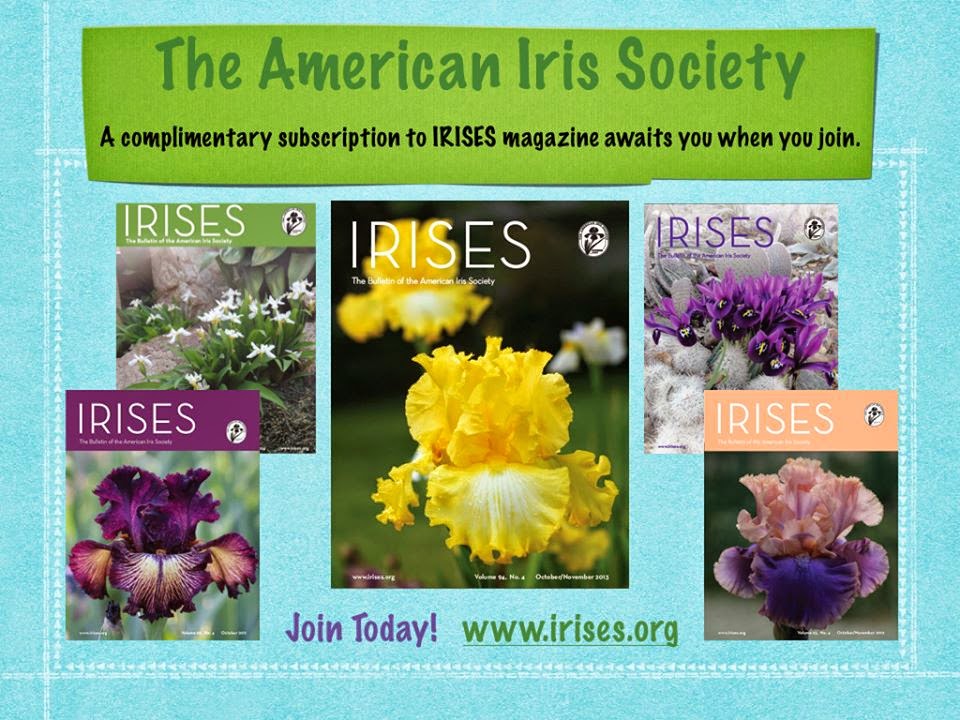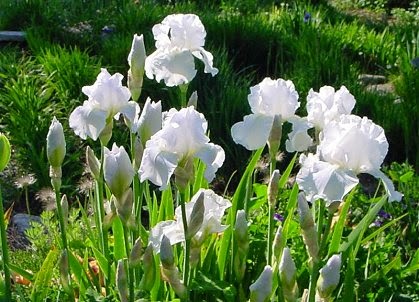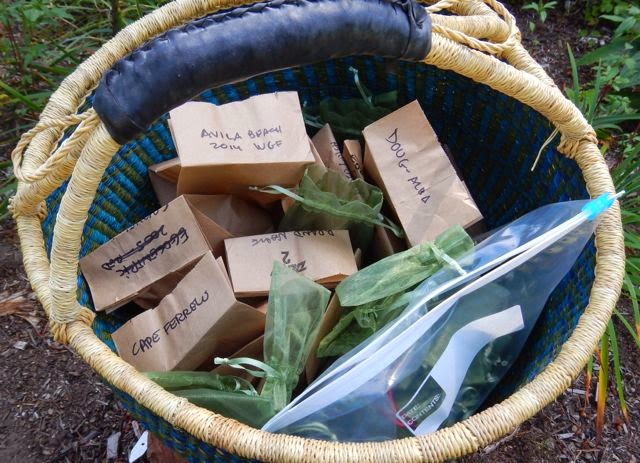By
J. Griffin CrumpIn my post of this past October 6 ("What Happens If You Cross These Two Irises?"), one of the featured irises was '
Entrancing', which is scheduled to be introduced in 2015. Of course, its pedigree is much longer than just the parents, which were also shown. I thought that it might be interesting to trace it back as far as the record goes, along with some explanation of why certain things were done.
Like many of my seedlings and several of my introductions, the trail winds back through '
Wabash', the iris which first lit the spark that started my hybridizing.
'Wabash'
This beauty was developed and introduced in 1936 by Mary Williamson, who gardened and hybridized near the storied river of that name in the north central portion of my native state of Indiana. 'Wabash's own parentage was 'Dorothy Dietz' X 'Cantabile' (Latin for "praiseworthy"). In turn, 'Dorothy Dietz'' parentage was 'Wyoming' X 'Lent A. Williamson', and Cantabile resulted from 'Lent A. Williamson' X unknown. Thus, there were two "doses" of 'Lent A. Williamson' in 'Wabash''s breeding. 'Lent A. Williamson' resulted from a cross of 'Amas' (introduced in 1885) X unknown. Of all of these ancestors of 'Wabash', the only photographs I have been able to find have been of 'Lent A. Williamson'. Unfortunately, two of those photographs -- one in our own Iris Encyclopedia and the other contributed by our late friend Mike Lowe, of the Historical Iris Preservation Society, to another late friend, Clarence Mahan's "Irises and the Men and Women Who Created Them" are differently colored, but clearly are the same flower. The difference in color of the background, as well, suggests that there was a difference in lighting or in the film, or both. I include both of them here. (Note the nick in the fall on the lower right in the second photo.)
![]() |
| Lent A. Williamson (Iris Encyclopedia) |
![]() |
| Lent A. Williamson (Mike Lowe) |
|
|
|
|
|
|
|
|
There are nine other photos of '
Lent A. Williamson' in the Iris Encyclopedia, all of which show the flower as blue-violet.
In 1992, hoping to bring 'Wabash''s velvet falls into (then) more modern form, I crossed it, as pod parent, with a yellow bi-tone seedling of unknown heritage (though it may have been from the lines of Jean Stevens of New Zealand, some of which I had) which had broader falls.
![]() |
| Yellow bi-tone seedling |
|
|
|
|
|
|
|
|
|
The cross produced Seedling 93L6, which reversed the color pattern of both parents, giving basically white falls and solid yellow standards, with a yellow ring on the broad, ruffled falls. At this point, I felt I was making progress.
![]() |
| Seedling 93L6 |
|
I crossed 93L6, as the pod parent, with Barry Blyth's 'Chinese Treasure', hoping that it would interact with the 'Wabash' genes to restore the amoena (pure white standards) factor and velvet texture of the falls.
![]() |
| Chinese Treasure |
I was quite surprised by the resulting Seedling 952G8. It was smallish, but the colors are rich.
![]() |
| Seedling 952G8 |
Meantime, still working with amoenas and dark velvet falls, I had crossed the amoena 'Margarita' by the exotic bi-tone 'Momauguin' (which I had never been able to photograph well and no longer have).
![]() |
| 'Margarita' |
![]() |
| 'Momauguin' |
'Momauguin' certainly wasn't going to win any beauty contests, but I was intrigued by the crushed velvet texture of its falls. I saw it growing in Charlie Nearpass's garden one spring, and he ripped it out of the ground and gave it to me.
The cross of 'Margarita' X 'Momauguin' produced six seedlings, of which only three survived, but the graceful form of their stalks added a new focus to my hybridizing efforts. The best of the three was 93RR6. In the following photo of a clump of this seedling, there are three stalks shown. The stalks on the left and right display the graceful S curve of the entire plant as well as the lower branch, probably indicating aphylla ancestry. The S curve is present in the center stalk, of course, but is more difficult to trace in the picture. The plant normally carried 9 buds.
![]() |
| Seedling 93RR6 |
I treasured 93RR6, but could never get a cross involving it. Happily, there was its sibling 93RR2, smaller overall, but with the same seductive branching and velvety falls. I crossed it, as the pod parent, with another smallish iris, 'Fringe of Gold'.
![]() |
| Seedling 93RR2 |
![]() |
| 'Fringe of Gold' |
These two produced Seedling 952H1 which, unfortunately, seems to have eluded the camera; I crossed it, as the pod parent, with 952G8 (shown above), and that resulted in Seedling 20Q5, again somewhat on the small side, but keeping the desired branching.
![]() |
| Seedling 20Q5 |
I waited for a long time to find a suitable match for
20Q5, as noted in October's post. Eventually, after acquiring Sterling Innerst's '
Lynsy Alexandra', I found it to be so similar in shape and patterning that it invited the cross.
![]() |
| Lynsy Alexandra |
Among the several good seedlings resulting, I found
Seedling 07S9 to be entrancing, so it will be introduced under that name in 2015.
![]() |
| 'Entrancing' |
And the branching?
![]() |
| 'Entrancing' | | |
So, in the pursuit of initial goals, we may find other avenues also worthy of exploration. So much the better.











































.jpg)
























































































